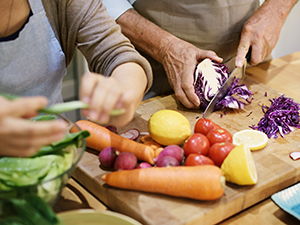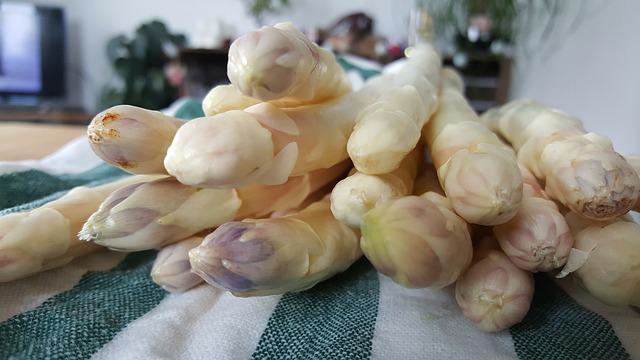
You will often use the julienne when making a salad, or any other dish that requires similar-thickness vegetables. This type of cut is simple to prepare. Simply slice each vegetable into thin strips, then stack them one after the other. Juliennes are best for leafy greens. This involves rolling the leaves into tubes, cutting them into thin strips and stacking them.
Brunoise
Most restaurants prepare vegetables using julienne, but the brunoise is an alternative. This technique allows vegetables to cut into cubes measuring 3mm. This is particularly helpful for vegetables like potatoes that are often more difficult to cut than other kinds of vegetables. You can find some helpful tips here if you aren't certain about the technique.
Chiffonade
Chiffonade refers to a French cooking technique in which thin strips are made of larger leafy vegetables and herbs, so they look like a sliver. Although the word chiffonade literally means "in clothes", it looks more elegant than rags. It can also be made from various green thin leafy vegetables like spinach, sorrel, and even radicchio.

Oblique
Chopping and slicing vegetables is a basic process that is relatively easy. How can you ensure they cook evenly? Cutting in an oblique way ensures that more of the vegetable surface area is exposed to heat. This is also called a roll cut. It allows you to create pieces that are the same size and shape, but not uniformly. You can learn how to make an Oblique Cut in your kitchen.
Paysanne
If you see a Paysanne demonstration, you'll be intrigued to give it another try. This method uses a miniature stick to cut vegetables into butter-like pieces. The demonstration was done with a daikon radish. If you prefer a more complex cut, a chef's knives is the best choice. The blade should not be dull.
Oblique cut
The oblique cut is a great way to learn if you are a passionate cook. It is a simple method that ensures vegetables cook evenly and uniformly. Oblique cuts, also known as roll-cuts, are easy to master. These cuts can be used for roasting, stir-frying, and glazing as the exposed area gives them a more attractive look and texture.

Julienne
To julienne, cut vegetables, you'll first need to peel them and then wash them. You can cut them in strips of approximately 0.3 to 1.5 cm lengthwise. Next, stack multiple strips on top each other to form matchstick-like strips. Julienned vegetables are ideal for stir-frying and can be used in any dish. You can julienne any type of vegetable, including potatoes, cucumbers, and peppers.
FAQ
Do I require any special equipment?
You don't require any special equipment to learn how to cook. However, the right tools can make it easier to cook. For example, a knife could be used for pasta making or a whisk would be better than a hand mixer for whipping egg whites to stiff peaks. You can make cooking more enjoyable and easier by having the right tools.
Which method is best to learn how to cook?
Cooking is one of those things that everyone should know how to do. It's a great way to experience delicious food without having to learn how to cook. First, find a recipe that appeals to you and then follow it closely. The next step is to practice making small modifications to the recipe until it becomes second nature. Finally, try cooking for others. This will help you improve at cooking and also allow you to test your skills.
Do I have to go to culinary school in order to be a professional chef?
No. Many chefs learned their craft on their own. Some even went to culinary schools to gain practical experience. Culinary school is preferred by most chefs because they have more opportunities to grow and learn. Culinary schools allow students to learn hands-on skills, and this helps them improve their cooking knowledge.
Statistics
External Links
How To
How to make the perfect omelet
Omelets are a favorite breakfast food of mine. But how do they turn out so perfectly? Many different recipes and methods have failed to work for me. So I am sharing some tips and tricks today to help you make fluffy, delicious omelets every morning.
It is important to know that eggs can be temperamental when making omelets. You must get them fresh, organically, and keep them cold until you cook. If they are not kept cold enough, the whites won’t form properly. The yolks will also break down too quickly and become runny. This will make your omelets appear strangely colored. If you plan to cook the eggs right away, it is best to use room temperature eggs.
Another tip is to separate each egg before adding them to the saucepan. You don't want the white to get mixed with the yolk, as this could cause the egg to curdle.
The bottom part of an egg that is added directly to the stovetop might be burned, which could cause a ruined texture in your omelet. Instead, microwave the egg for 10 seconds before adding it to the pan. The heat from the microwave cooks the egg just enough without overcooking it.
Next, let's talk about mixing the eggs. When mixing eggs, it is important to thoroughly beat them. You need to turn the bowl of the mixer upside down. Now shake the bowl vigorously. This allows the air to be whipped and the egg to be mixed thoroughly.
The fun part is now - adding the milk to the mixture. Mix half of the milk with the eggs. Then fold the eggs in half into the remaining milk. If you still see streaks of eggs, don't worry. These streaks will disappear once the omelet has been turned over.
After folding the eggs fold the pan onto medium heat. When the oil starts to hot, wait for the pan to cook. Add 1/4 cup butter to the oil and swirl it around to coat all sides of the pan. Open the lid and sprinkle salt on the pan. An additional pinch of salt will prevent the omelet form sticking to your pan.
Cover the pan once you have formed the omelet. Wait for the top to set. Flip the omelet with a spatula, or flip it upside down. Cook the other side for about a minute. Serve the omelet immediately by removing it from the pan.
This recipe is best when used with whole milk. But, you can use skimmed milk as well.